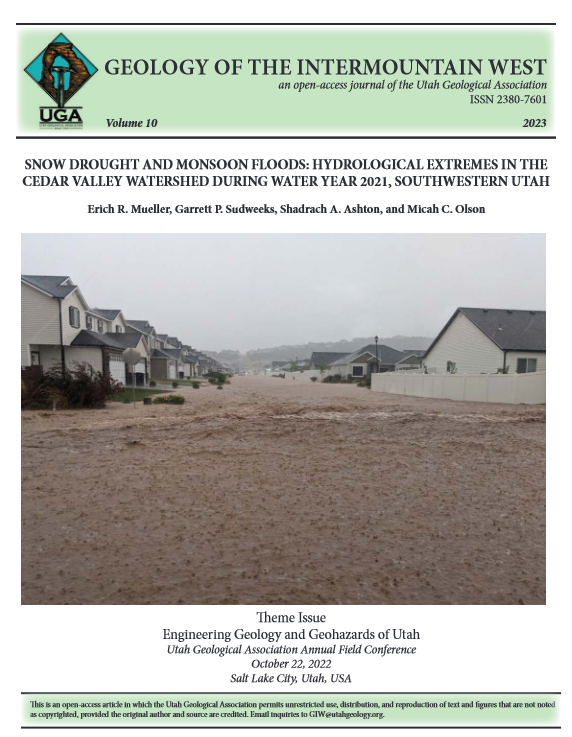Snow drought and monsoon floods—hydrological extremes in the Cedar Valley watershed during water year 2021, southwestern Utah
Abstract
Water year 2021 was a year of extremes in the Cedar Valley watershed of southern Utah, with snow drought resulting in extremely low snowmelt runoff of Coal Creek and intense monsoon rainfall resulting in several floods in different parts of the valley. Winter snow accumulation was depressed throughout southern Utah, perhaps due to La Nina conditions affecting winter storm trajectories. Coal Creek, the principal stream providing surface water to Cedar Valley, typically receives most of its annual flow from snowmelt runoff, but in 2021 had a peak snowmelt discharge 15% to 25% of that recorded in the previous two years and the third lowest snowmelt runoff on record. Following this extremely low snowmelt runoff period, more than 10 floods of Coal Creek occurred following monsoon storms in July and August that exceeded the 2021 snowmelt peak. Additionally, several thunderstorms produced rainfall rates in exceedance of the 100-year event and induced flooding within Cedar City and the town of Enoch. Flood inundation modeling using HEC-RAS and high-resolution topographic data showed good agreement with field and pubic-survey data on the high-water stage during the Enoch flooding, and demonstrated that the flooding was likely exacerbated by the low topography and limited drainage potential in flooded areas. Whereas the monsoon storms improved soil moisture and helped alleviate drought conditions, they also resulted in urban flooding and did little to replenish the regional water supply.

Copyright (c) 2023 Geology of the Intermountain West

This work is licensed under a Creative Commons Attribution-ShareAlike 4.0 International License.




